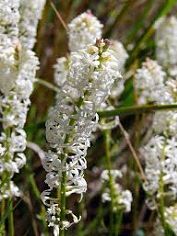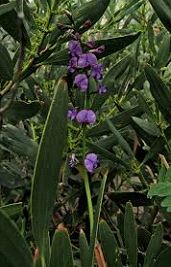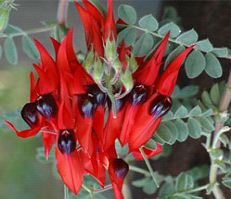This year the swathes of scented Creamy Candles have been prolific in the surrounding bush.
Creamy Candles, Stackhousia monogyna (*p 66)

Creamy Candles
This genus of herbaceous plants honours English naturalist John Stackhouse (1742-1819), who was a founding fellow of the Linnaean Society of London. He was a wealthy private scholar, educated at Oxford, who specialised in the study of seaweeds. He built Acton Castle in Cornwall. He contributed to early manuscripts which became The English Flora (4 vols 1824-8). The influential first president of the Linnaean society of London, Sir James Edward Smith, named the genera to honour Stackhouse.
There are 14 species in the genus, of which 13 are endemic to Australia. Our local species, Stackhousia monogyna, derives its species name from Latin with mono referring to the single seed (gyna) each flower produces. This is a misnomer, as three seeds are actually produced in each seed capsule. The local plant is rarely cultivated commercially and is difficult, but Angair has propagated 50-plus plants in tubes for our current online sale.
Coast Swainson-pea, Swainsona lessertiifolia (*pp146-7}
Another local plant of the Fabaceae family with an interesting name origin.
 Coast Swainson-pea
Coast Swainson-pea
The genus honours Isaac Swainson (1746-1812), a wealthy English doctor and prolific plant collector who developed an extensive, medicinal-oriented garden at his home, Heath Lane, in Twickenham. The species name of our local plant derives from the pinnate, compound leaves that resemble the pea plants of the South American and African genus of Lessertia. This genus honours wealthy French-Swiss nobleman and amateur botanist, Jules Paul Benjamin de Lessert, (1773-1847) who developed an extensive garden of New World plants outside of Paris. The local Swainson-pea was first classified in Paris in 1825 and is distinguished by royal purple upright flowers on stems about 50 cm high. For full description see pages above in Flowers of Anglesea and Aireys Inlet, MacDonald Ed 2009 edition.
The Swainsona genus is unique to Australia with 85 species. Of special interest is that one of Australia’s most iconic plants of the interior, the beautiful blood-red, kidney-eyed, Sturt’s Desert Pea, has been reclassified from the genus Clianthus to Swainsona. (Swainsona formosa=beautiful).
 Sturt’s Desert Pea
Sturt’s Desert Pea
* Flowers of Anglesea and Aireys Inlet, edited by Margaret MacDonald
Neville Millen